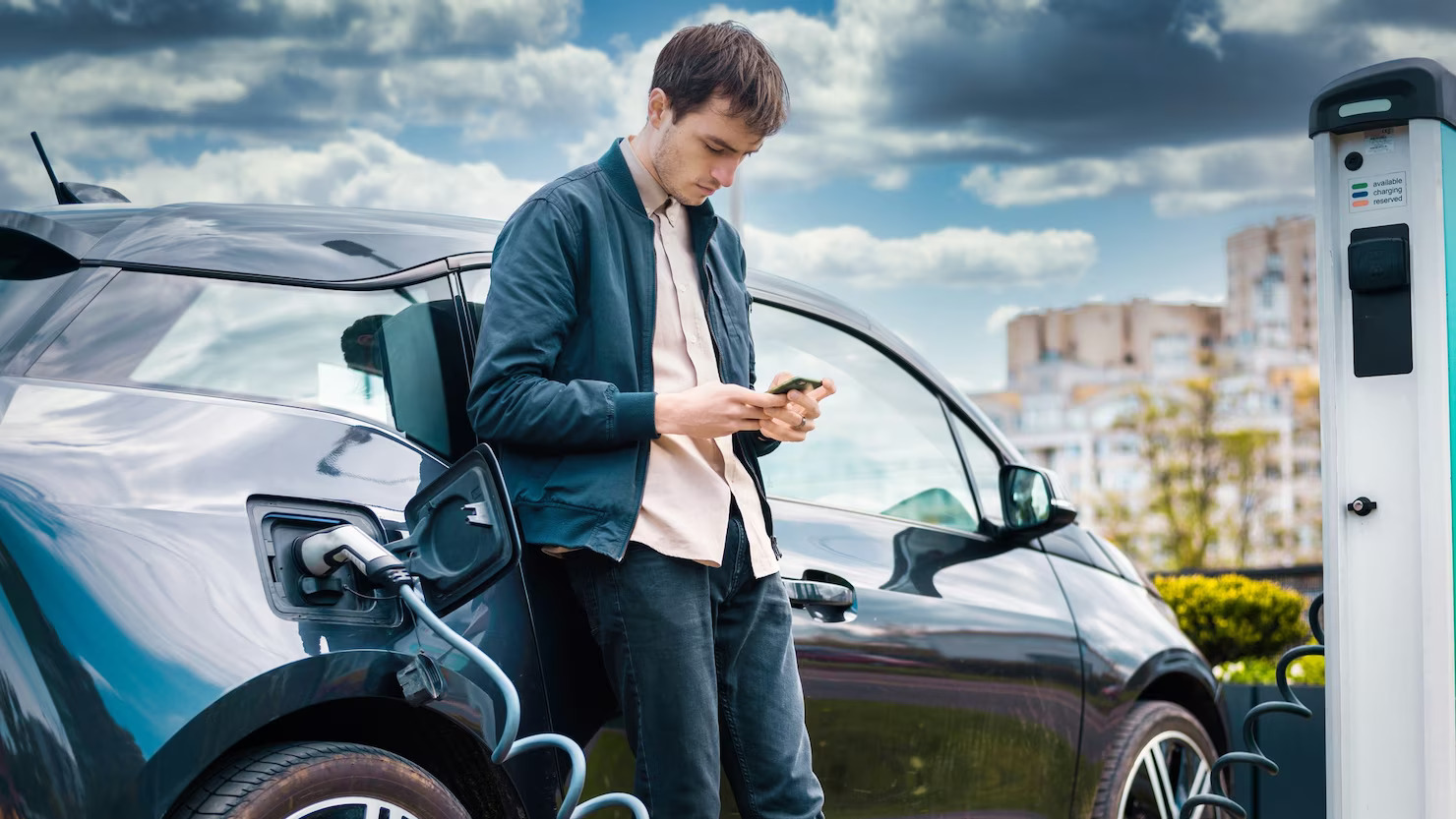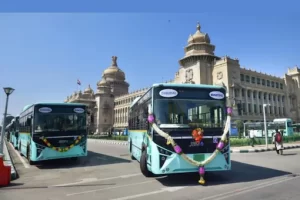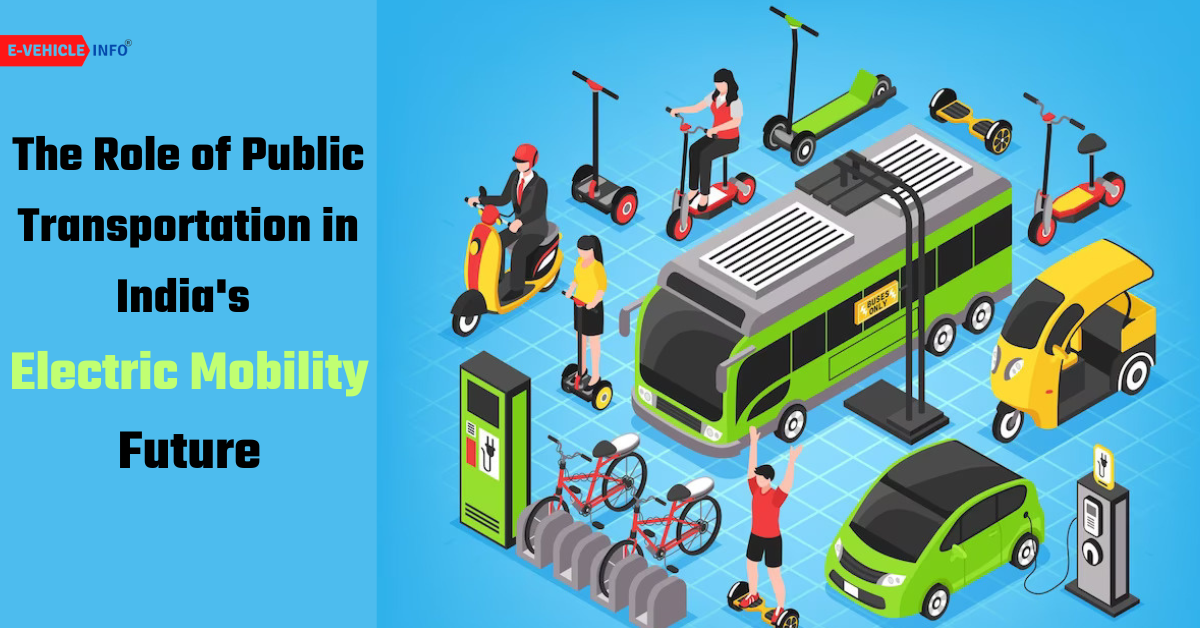Electric Mobility: Future of Public Transportation
In a world where climate change has become an undeniable reality, the need for sustainable transportation options has never been more critical. As an electric vehicle (EV) enthusiast, we firmly believe that electric mobility is the future of transportation in India. In this article, we will explore the benefits of electric public transportation, the challenges it faces, and its potential to shape India’s electric mobility future.
1. The Current State of Electric Mobility in India
Before we delve into the role of public transportation, let’s take a closer look at the current state of electric mobility in India. According to the Ministry of Heavy Industries and Public Enterprises, as of March 2023, India had approximately 14,00,000 electric vehicles on its roads, including two-wheelers, three-wheelers, and four-wheelers. This figure demonstrates the growing popularity of electric vehicles in the country.
2. Benefits of Electric Public Transportation
Electric public transportation holds immense promise for India’s sustainable future. Here are some of the key benefits:

Electric buses and trains produce zero tailpipe emissions, significantly reducing air pollution and greenhouse gas emissions. This reduction is critical for India’s efforts to combat pollution and climate change. With pollution levels in Indian cities reaching alarming levels, electric public transportation can be a breath of fresh air.
Electric public transportation systems generally have lower operating costs in the long run. Electricity is typically cheaper than fossil fuels, and electric vehicles require less maintenance. These cost savings can significantly benefit transportation authorities, allowing them to allocate resources more efficiently.
-
Enhanced Passenger Experience:
Electric vehicles are quieter and provide a smoother ride, enhancing the overall passenger experience. The absence of noisy internal combustion engines and vibrations leads to a more peaceful and comfortable journey for commuters. Moreover, electric public transportation can offer improved air conditioning systems, ensuring passenger comfort even during India’s scorching summers.
Electric vehicles are highly energy-efficient, with a significant portion of the energy from the grid converted into motion. This efficiency contributes to reduced energy consumption and a more sustainable transportation system.
3. Challenges in Electrifying Public Transportation
While the potential of electric public transportation is exciting, several challenges need to be addressed for its widespread adoption:
The transition to electric public transportation necessitates a substantial upfront investment in EVs and charging infrastructure. Government subsidies and private partnerships can help alleviate this financial burden. By providing financial incentives and support, governments can encourage transit agencies to make the switch to electric fleets.

Electric buses must have sufficient range to cover their routes, and charging infrastructure must support rapid charging to minimize downtime. Advances in battery technology are gradually addressing these concerns. High-capacity batteries and fast-charging technology are making it increasingly feasible for electric buses to cover long distances and recharge quickly during breaks.
A large-scale adoption of electric public transportation may strain the electricity grid, requiring upgrades to handle increased demand. A coordinated effort between transport authorities and power utilities is essential to manage this challenge. Smart grid technologies can help optimize energy distribution and ensure a reliable power supply for electric transportation.
4. Successful Case Studies
To better understand the potential of electric public transportation, let’s look at some successful case studies:

The Delhi Metro, one of India’s busiest public transportation systems, has been incorporating electric trains for years. These electric trains are not only energy-efficient but also provide a comfortable and reliable mode of transportation for millions of passengers. The Delhi Metro’s commitment to electrification sets an example for other cities to follow.
-
Bengaluru’s Electric Buses:

Bengaluru has introduced electric buses into its fleet, showcasing a commitment to cleaner transportation. These buses have garnered positive feedback for their reduced noise levels and emissions. Bengaluru’s experience demonstrates that electric buses can thrive in bustling urban environments.
-
Kolkata’s Tram Revival:

Kolkata’s iconic tram system has seen a revival with the introduction of electric trams. These trams are not only eco-friendly but also offer a nostalgic charm to the city’s transportation landscape. Kolkata’s efforts highlight how historic public transportation can be modernized with electric technology, preserving cultural heritage while promoting sustainability.
5. The Road Ahead: Advocacy and Innovation
As EV enthusiasts and advocates for sustainable transportation, we must actively support the electrification of public transportation. Here are some key actions we can take:
-
Advocate for Policy Support:
Encourage government policies that promote the adoption of electric public transportation, such as incentives for transit agencies to invest in electric buses and charging infrastructure. Clear and supportive policies can accelerate the transition to sustainable transportation.
Educate the public about the benefits of electric public transportation. Highlight how it contributes to cleaner air, reduced noise pollution, and a more sustainable future. Public awareness campaigns can garner support for electrification efforts.
-
Support Research and Innovation:
Encourage research and innovation in battery technology, charging infrastructure, and electric vehicle design to address existing challenges. Investing in research and development can lead to breakthroughs that make electric transportation even more accessible and efficient.
Conclusion
Electric public transportation has the potential to revolutionize India’s transportation landscape. With reduced emissions, lower operating costs, enhanced passenger experiences, and energy efficiency, it is a win-win solution for both the environment and the economy. While challenges exist, they can be overcome through strategic investments, policy support, and technological advancements.
As electric vehicle enthusiasts, it is our responsibility to advocate for and support the electrification of public transportation. The growth of electric mobility in India is not just a choice but a necessity for the well-being of our planet and future generations. Let us work together to make electric public transportation a cornerstone of India’s electric mobility future, creating a greener and more sustainable tomorrow.
About the Author
The article is Authorized by Mr. Keval Padia, CEO of Nimblechapps Pvt. Ltd. based in Ahmedabad, Gujarat, India.
Read More:- Himachal Pradesh to Convert All Public Transport into Electric Vehicle










